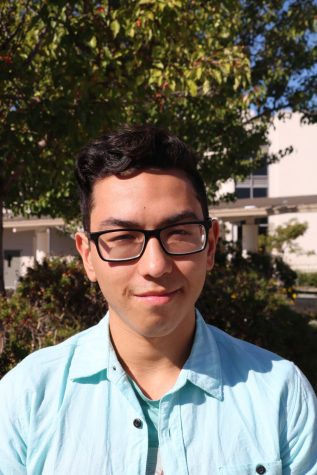UC acceptance rates drop
This year has seen a record number of people apply to the nine University of California campuses.
Early reports indicate that more than 200,000 students applied for undergraduate admissions to the University of California system for next fall, according to the The Mercury News.
The number of applicants increased by an average of 5.7 percent per school, according to statistical data from the UC admissions website.
Some schools had an increase in applicants reach double digits. UC Riverside saw their number of applicants jump by 12.4 percent, according to UCR Today.
“Rejections kinda hurt but then again we all knew they were coming,” said senior Ali Malik.
With so many high school seniors having applied to in and out-of-state schools, many students were surprised that they had difficulty getting accepted to what they once considered their safety schools.
“A lot of my extremely qualified classmates were rejected from schools they should have gotten into,” said senior Laura Hughes.
Highly competitive schools such as UC Berkeley or UCLA have always been considered long shots by many applicants. And the standards at these two schools seem to be rising as their acceptance rates continue to drop.
UC Davis alone received a record number of applicants, totaling more than 95,000, according to the UC Davis undergraduate admissions website.
“It’s really hard because most of my friends applied to really impacted majors like computer science and many are being rejected from UCs that are traditionally ‘easy’ to get into like Irvine or Davis,” said senior Leron Reznikov.
After state funding dropped 20 percent between 2007 and 2013, UCs and California State University schools have struggled to meet the demands of an increasing applicant load.
It’s no surprise UCs started to accept more out-of-state applicants in hopes of generating extra revenue from out-of-state tuition.
In-state tuition and associated costs for the UCs averages about $34,700 annually, compared to about $61,444 for out-of-state students.
In 2016, California lawmakers threatened to withhold $18.5 million in public university funding if schools didn’t put a cap on the number of nonresidential applicants accepted, according to the Los Angeles Times.
One theory to this madness is that this year’s high school seniors are paying for last year’s serious miscalculation at UC Irvine.
According to Inside Higher Ed, about 800 more accepted applicants than expected sent in deposits to enroll at UC Irvine, bringing the first-year class to an unexpectedly large 7,100.
Irvine then revoked the acceptances of 500 of those new students because there wasn’t enough room for all of them.
Students voiced their concern and though this decision was eventually reversed, it may have prompted UC campuses to use wait lists more to manage their yields, rather than risk having several hundred more registered freshmen than planned.
“It’s sad because they’re really smart but because of either yield protections or the fact that the college just had too many applicants, they got rejected and it’s not cool, ” said Hughes.
With the UCs becoming increasingly competitive, it’s also not a surprise that many students have started to apply to more out of state schools where they might have a better chance of getting into their top choices.
Students applying to schools such as the University of Arizona have a significantly better chance of getting in since the acceptance rate is close to 80 percent.
Competitive East Coast schools such American University or Boston University, where the acceptance rate hovers around 20 percent, could be considered easier to get into than some state schools such asa Cal Poly San Luis Obispo, which is expecting to see its acceptance rate drop this year after the school received 13 percent more applicants than last year.
Many college counselors have embraced the idea of applying out of state as a backup in case students don’t get admitted into UCs
“I talk to more students about out of state options now,” said Haley Stultz, Cal’s college and career coordinator. “To me it’s kind of sad and frustrating because I want kids to have access to colleges. I wouldn’t say that schools like UC Santa Barbara or UC Davis could be considered safety schools anymore.”






John • Jun 1, 2018 at 4:01 pm
UC Davis and Santa Barbara can be no one’s safety.